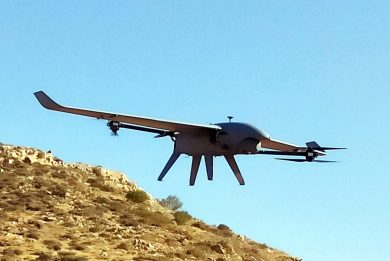
Rejuvenating the Leopard 1: John Cockerill’s recipe
How many of the nearly 6,500 Leopard 1 are still in service, and how many are mothballed but still in good conditions, it’s hard to say. But definitely quite a number of them is still around, five nations still using them, a sixth being close to receive those legacy MBTs that first entered service in the mid-1960s, as Ukraine should soon deploy 50 such tanks provided by Germany.
Finding optimal solutions to update those existing tanks might prove to be a lucrative market, hence John Cockerill of Belgium started working on this issue. Two main solutions can be adopted, upgrading the existing turret or replace it. The company has in house a solution in the form of a modern turret, the Cockerill 3105, which is armed with the same 105 mm high pressure gun of the Leopard 1. All considerations made, John Cockerill realised that it was easier and more effective replacing the whole turret rather than working on the old one. It then acquired a Belgian Army Leopard 1A5BE to verify the integration of its modern turret onto the older chassis.
To do so John Cockerill produced an interface to be inserted between turret and chassis, as the original depth from the slip ring to the tank floor is not sufficient to host the Cockerill 3105 turret basket. To prove the concept he interface solution was cheaper, easier and quicker than modifying the turret basket, a solution that might however be adopted, EDR On-Line understood, should a customer require it.
The work was performed at the company Aubange facility in Belgium, close to the French and Luxembourg borders. Once the interface was ready, integrating the turret took a single day, a single cable to bring power to the turret being needed. The upgraded Leopard 1 is therefore equipped with a brand new turret made of welded ballistic aluminium, which can be fitted with armour kits bringing its protection up to STANG 4569 Level 5. The weapon as said remains identical, but here the crew in the turret is reduced to two members, the Cockerill 3105 being equipped with an auoloader that can host 12 or 16 rounds. Firepower can be further increased by integrating antitank guided missiles. The Cockerill 3105 benefits of a modern vetronic architecture allowing easy insertion of new sensors, the commander and gunner workstations are identical, linked to a digital fire control systems, while both operators have dual stabilised sights, the system allowing hunter-killer operations. Optronic systems integrated into the turret provide detection/recognition/identification ranges of respectively 18/9/5 km at day and 15/7/3.5 km at night with the Sagem sighting systems installed.
Besides adding a modern turret with all the obvious advantages, the Cockerill 3105 allows to spare over 3.5 tonnes of weight. This can be exploited to improve the chassis protection, the other option being to just have a lighter tank, which might prove a plus on a chassis that has already logged numerous kilometers, increasing mean time between failures and reducing wear and tear, further stretching its operational life.
Photos by P. Valpolini





